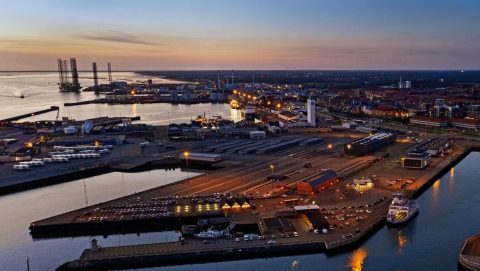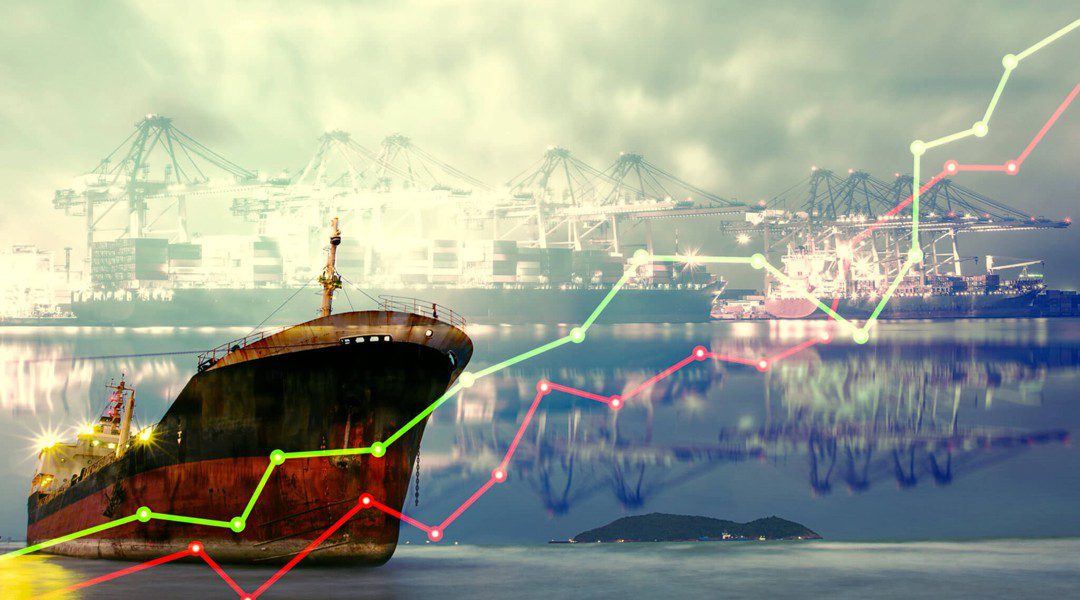
Port Esbjerg has been granted permission to deepen its fairway, another step towards the green transition and becoming a NATO port. This will further strengthen the port’s infrastructure and establish its place as a critical infrastructure hub.
Very large vessels, including cargo vessels, RoRo vessels, military vessels and wind turbine vessels, will soon be able to enter the port, as the Danish Coastal Authority has given Port Esbjerg the go-ahead to deepen the fairway.
The deepening is necessary, not least because wind turbine vessels will be even larger in future and because NATO military vessels carry heavy equipment and need to be able to load and unload quickly. If Port Esbjerg is to support military mobility and at the same time be an offshore wind hub, the port must be geared to receive larger vessels than today.
“We’re pleased that we’ve finally been given the go-ahead so that we can get started,” says Dennis Jul Pedersen, CEO at Port Esbjerg.
Keeping up with the growth
The vessels serving the European wind industry are becoming larger, subsequently requiring ports to have better conditions for accommodating large offshore wind projects. In 2022, Port Esbjerg was granted DKK 211 million ($30.3 million) from the EU infrastructure fund, Connecting Europe Facility (CEF), to deepen the fairway from 9.3 to 12.8 metres. Consequently, Port Esbjerg has now been designated as a Ten-T port as part of the Trans-European Network.
“This will be a game-changer for our port and position us as a critical hub for both military transports and wind turbines in the future,” says Dennis Jul Pedersen. The project also involves an extension of the railway and paving of large areas.
The Grådyb fairway
The project aims to deepen Grådyb, a 21.6 km long fairway that connects the North Sea to Port Esbjerg. The project has been delayed due to environmental surveys, and Port Esbjerg has prepared an environmental impact report for the project, which has been submitted for consultation. The report describes how the project will affect the natural environment in the area.
To deepen the fairway to the required level, up to 3,702,000 cubic metres of material must be dredged from the seabed. This material will be used primarily for the expansion of the port towards the south.
“We believe that this is a sensible solution both from a financial and an environmental point of view,” says Dennis Jul Pedersen.
Port Esbjerg expects the work to begin this autumn and to be completed next spring. Through the North Sea Agreement, Port Esbjerg has received a grant of DKK 90 million ($12.9 million) from the Danish state, which will be used to develop and expand the port to accommodate more offshore wind activity in the future.

Port Esbjerg has been granted permission to deepen its fairway, another step towards the green transition and becoming a NATO port. This will further strengthen the port’s infrastructure and establish its place as a critical infrastructure hub.
Very large vessels, including cargo vessels, RoRo vessels, military vessels and wind turbine vessels, will soon be able to enter the port, as the Danish Coastal Authority has given Port Esbjerg the go-ahead to deepen the fairway.
The deepening is necessary, not least because wind turbine vessels will be even larger in future and because NATO military vessels carry heavy equipment and need to be able to load and unload quickly. If Port Esbjerg is to support military mobility and at the same time be an offshore wind hub, the port must be geared to receive larger vessels than today.
“We’re pleased that we’ve finally been given the go-ahead so that we can get started,” says Dennis Jul Pedersen, CEO at Port Esbjerg.
Keeping up with the growth
The vessels serving the European wind industry are becoming larger, subsequently requiring ports to have better conditions for accommodating large offshore wind projects. In 2022, Port Esbjerg was granted DKK 211 million ($30.3 million) from the EU infrastructure fund, Connecting Europe Facility (CEF), to deepen the fairway from 9.3 to 12.8 metres. Consequently, Port Esbjerg has now been designated as a Ten-T port as part of the Trans-European Network.
“This will be a game-changer for our port and position us as a critical hub for both military transports and wind turbines in the future,” says Dennis Jul Pedersen. The project also involves an extension of the railway and paving of large areas.
The Grådyb fairway
The project aims to deepen Grådyb, a 21.6 km long fairway that connects the North Sea to Port Esbjerg. The project has been delayed due to environmental surveys, and Port Esbjerg has prepared an environmental impact report for the project, which has been submitted for consultation. The report describes how the project will affect the natural environment in the area.
To deepen the fairway to the required level, up to 3,702,000 cubic metres of material must be dredged from the seabed. This material will be used primarily for the expansion of the port towards the south.
“We believe that this is a sensible solution both from a financial and an environmental point of view,” says Dennis Jul Pedersen.
Port Esbjerg expects the work to begin this autumn and to be completed next spring. Through the North Sea Agreement, Port Esbjerg has received a grant of DKK 90 million ($12.9 million) from the Danish state, which will be used to develop and expand the port to accommodate more offshore wind activity in the future.





